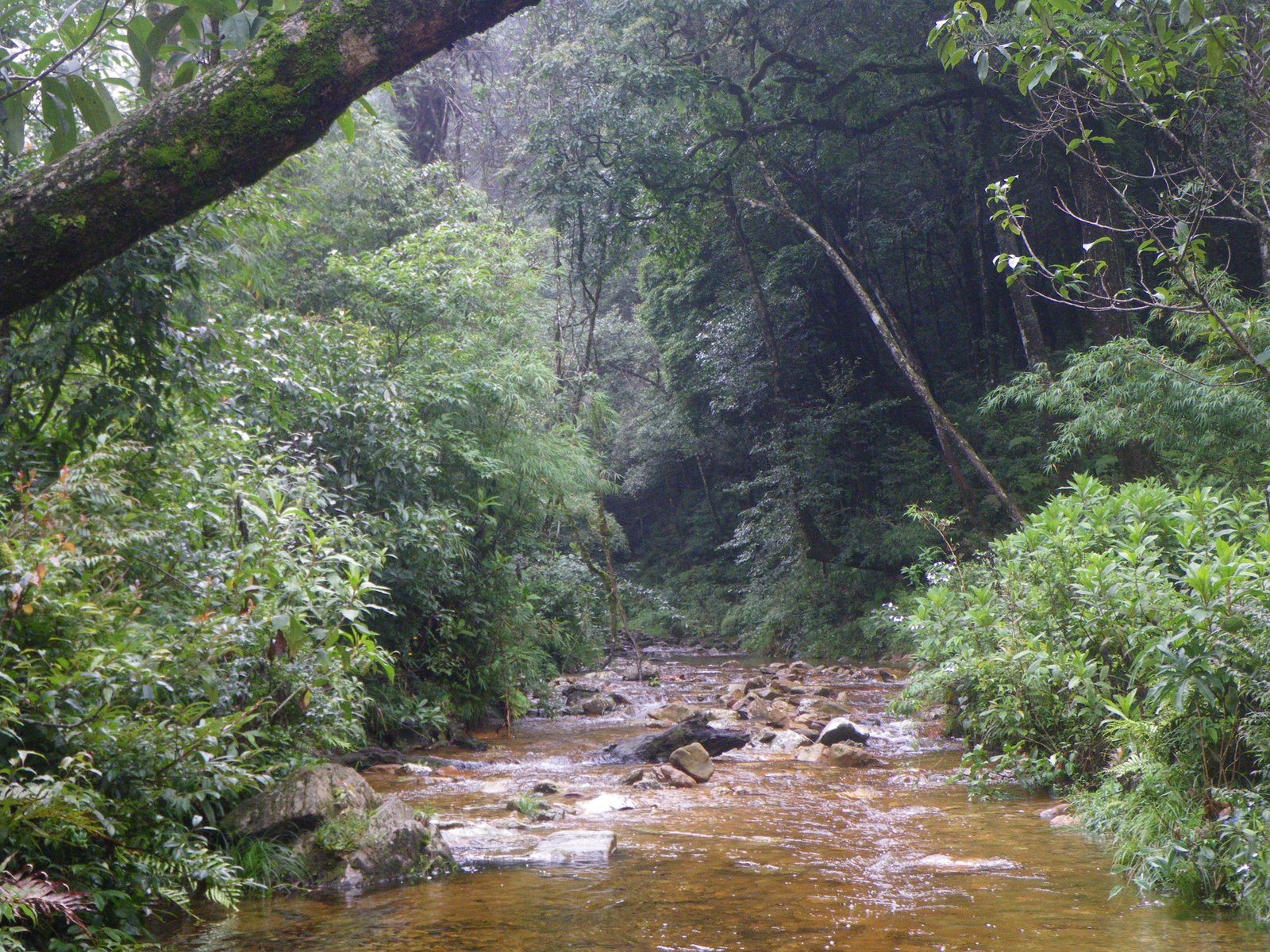A tad mysterious: The identity of five fabulous funnel-mouthed tadpoles revealed
When it comes to surveying for rare and threatened frog species, it’s important to be able to identify the tadpoles too!
The tadpoles of some frog species remain unknown to science, years after the adult frog is discovered. However, being able to identify the species a tadpole belongs to is vital for understanding the species and helping conserve it. Our recent collaborative fieldwork on the highest mountains of Vietnam has uncovered the bizarre tadpoles of five frog species, and we identified and described each species in detail for the first time.

Giant horned frog (Megophrys gigantica) tadpoles, Vietnam.
Image: Benjamin Tapley© Benjamin Tapley
Frogs undoubtedly have among the most diverse and fascinating ways of reproducing of all animal groups. Australia’s Gastric Brooding Frogs (Rheobatrachus vittelinus and R. silus), now sadly extinct, swallowed their own eggs, ‘switched off’ their stomach acids in order to gestate their babies, and then vomited them up as froglets. The Suriname Toad (Pipa pipa) really puts its back into baby making – froglets literally emerge from the skin of their mother’s back. But most frogs do something much more familiar and subscribe to the old tadpole-frog life cycle we all learned in school.
It’s this double mode of living – on land and in the water – that earned amphibians their name about 200 years ago, so you’d be forgiven for thinking that by now we know which tadpole is which. But if you can think of a particular frog species, consider whether you’d be able to identify its tadpole. While tadpoles in some areas are reasonably well-studied, the same is not true in many biodiversity hotspots, like Vietnam. In places like these, it’s not uncommon that new frog species are discovered and introduced to the scientific community without their tadpoles being known at all.

Giant horned frog (Megophrys gigantica), Vietnam.
Image: Benjamin Tapley© Benjamin Tapley
During our collaborative amphibian biodiversity surveys in the Hoang Lien Mountains of Vietnam over the last several years, we found tadpoles of five species of Horned Frogs (Megophrys). Adult horned frogs are rather impressive, with soft “spikes” typically extending above their eyes, giving them their common name. We knew these tadpoles were Horned Frogs – they have distinctive funnel-shaped mouths, reminiscent of Salvador Dalí’s famous moustache. However, there are over 100 species of horned frogs and none of the tadpoles we found had been described in detail in the scientific literature; so identifying them further wouldn’t be easy…

Stream in Hoang Lien National Park, northern Vietnam, habitat to Horned Frog tadpoles.
Image: Jodi Rowley© Australian Museum
We took DNA samples and compared them to all the Horned Frog species known from the region. As it turns out, some of the tadpoles had never been discovered before, despite their species already being known to science. Once identified, we made detailed descriptions of their size, proportions, colour and features so that they can be easily recognised by other scientists in future surveys.

Giant horned frog (Megophrys gigantica) tadpole, Vietnam.
Image: Benjamin Tapley© Benjamin Tapley
Our discovery fills a problematic gap in our knowledge of Vietnam’s imperilled amphibians and will continue to do so. It’s important for conservation to know what species live where, which means being able to find and identify species is among the first hurdles in conserving them. Often, tadpoles are much easier to find than adult frogs – they can be easy to spot in the water, while adults spend long amounts of time far away from the water and are well camouflaged. In fact, we often find tadpoles at sites well before we find an adult of the species.
With the charismatic tadpoles of these five species now known and recognisable, we hope that more, desperately needed information can be gathered on their species so that they can be properly conserved. With many species of Horned Frog in this region being recognised as threatened, this couldn’t be timelier.
Timothy Cutajar, Research Assistant, Herpetology, Australian Museum Research Institute
Dr Jodi Rowley, Curator, Amphibian & Reptile Conservation Biology, Australian Museum Research Institute & UNSW Sydney
Nguyen Thanh Luan, Scientific Officer, Asian Turtle Program of Indo-Myanmar Conservation
Benjamin Tapley, Curator of reptiles and Amphibians, Herpetology Section, ZSL London Zoo
Christopher Portway, Research Assistant, Herpetology, Australian Museum Research Institute.
More information
Tapley, B., Nguyen, L.T., Cutajar, T., Nguyen, C.T., Portway, C., Van Luong, H., and Rowley, J.J.L. (2020). The tadpoles of five Megophrys Horned frogs (Amphibia: Megophryidae) from the Hoang Lien Range, Vietnam. Zootaxa, 4845 (1): 35–52.
Acknowledgements
These expeditions were part of an Ocean Park Conservation Foundation Hong Kong funded project to understand and protect the amphibians of the Hoang Lien Range, northern Vietnam. The project is a collaboration with the Zoological Society of London, the Asian Turtle Program of Indo Myanmar Conservation and the Center for Rescue and Conservation of Organism (Hoang Lien National Park). Many thanks to all who made this work possible.









